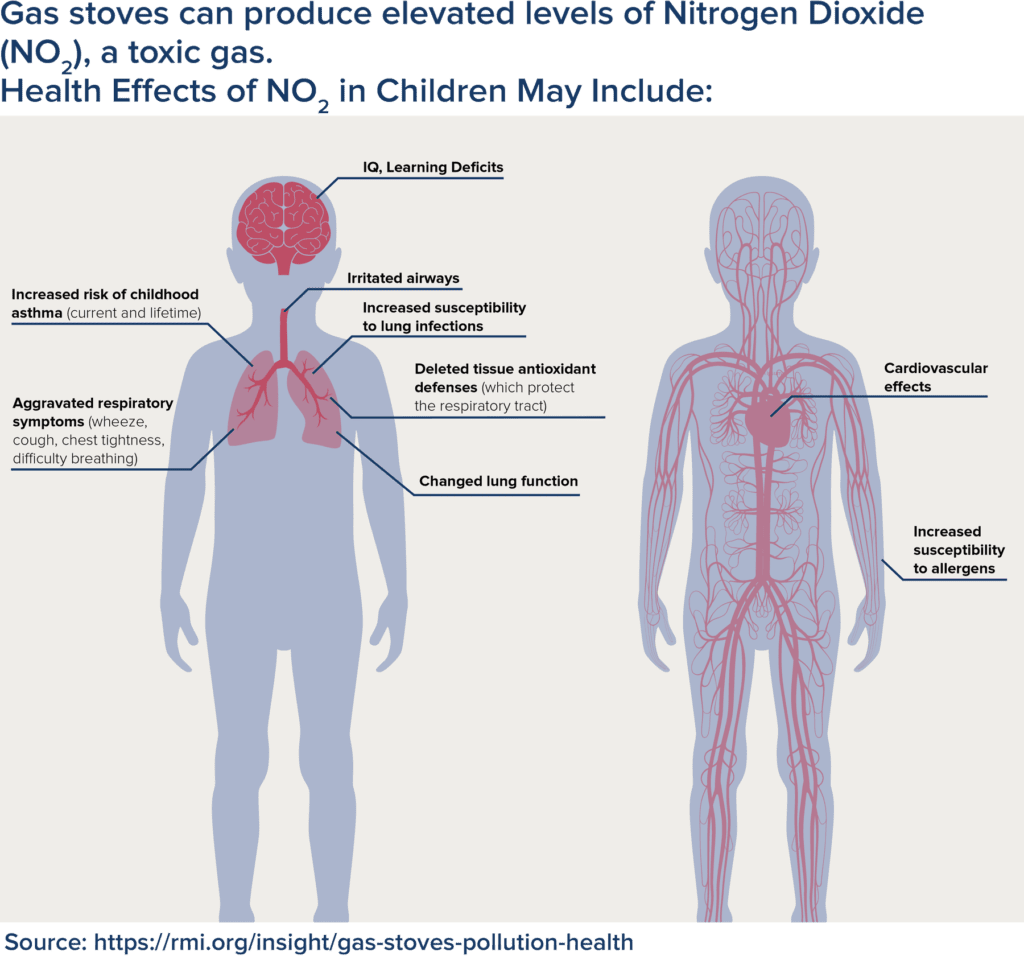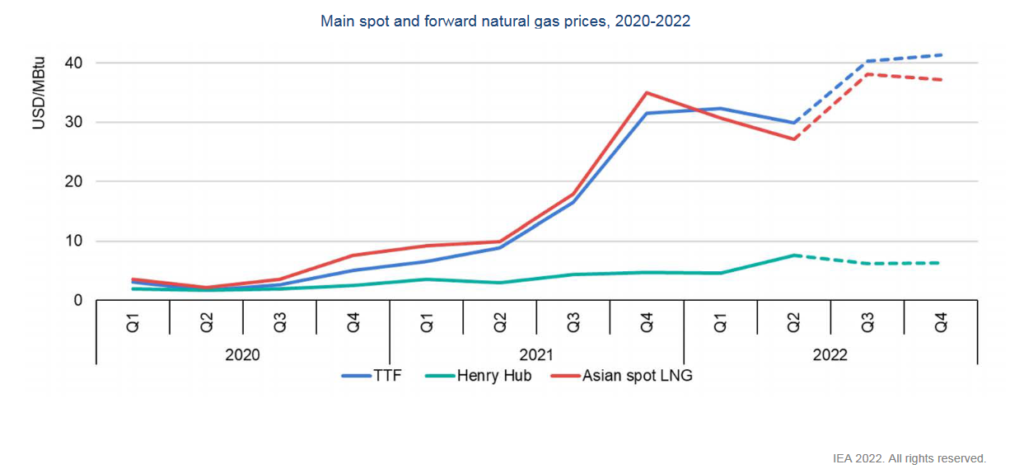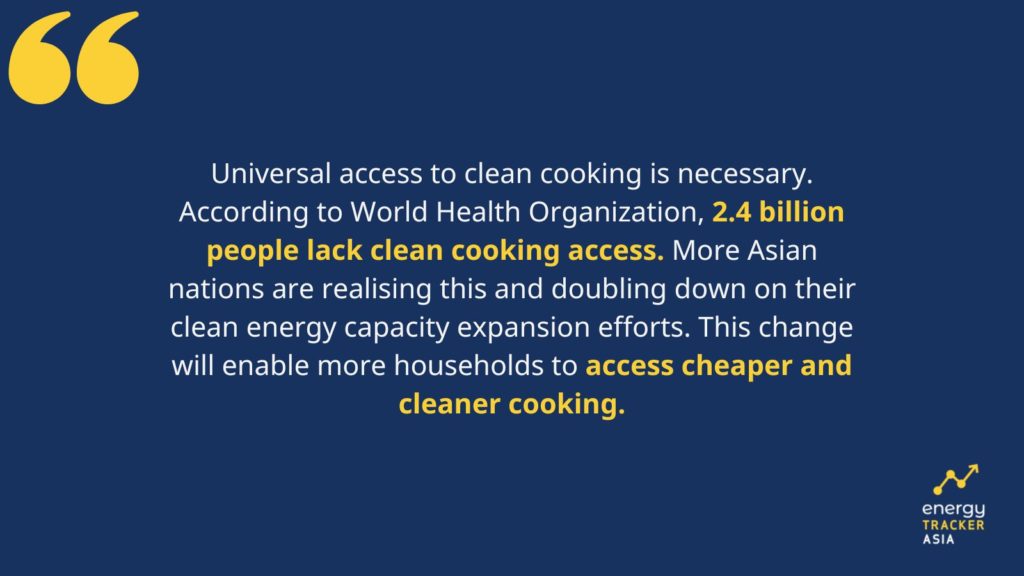The Transition to Clean Cooking: How to Replace Gas?
06 September 2022 – by Viktor Tachev
A widespread, decades-long campaign has shaped the idea that affordable and clean cooking is possible only with natural gas. The marketing efforts have convinced millions of households from many low and middle-income countries that cooking with gas is the best option for their homes. However, new findings and current market developments prove otherwise. Gas is not a clean cooking fuel. Cooking with gas is neither clean nor cheap, and households are now learning this the hard way.
Using traditional solid fuels like wood and coal for cooking is a form of dirty cooking that emits carbon dioxide.
What is Clean Cooking?
Clean cooking means cooking in a way that doesn’t produce harmful greenhouse gas emissions. This includes the release of pollutants into the environment and exposure to dangerous fumes while cooking. It also means not using polluting fuels or traditional stoves for cooking.
The State of the Clean Cooking Sector
The clean cooking sector is responsible for providing clean cooking fuels and modern energy cooking services. It is a rapidly growing industry with great potential to improve the lives of billions of people.
Why Cooking With Gas Isn’t Clean – Household Air Pollution
Gas stoves emit various pollutants. These include nitrogen oxide (NO), nitrogen dioxide (NO2), carbon monoxide (CO) and formaldehyde (CH2O or HCHO). Around 75% of the gas emissions occur when the stove is off. They can be toxic to people and pets without proper management and when present in sufficient concentrations. Furthermore, gas combustion produces PM 2.5, which is among the most dangerous air pollutants.
Cooking with gas is responsible for up to 12% of childhood asthma cases in Australia. A child living in a gas-cooking household is at equal risk of asthma as a child living with smokers. Gas cooking is also linked to a greater risk of various respiratory infections, lung function reductions in children and rhinitis.

To mitigate the risk of such health hazards, gas cooking households have to use modern and safer appliances and ensure proper maintenance and ventilation. However, poorer households often can’t afford all these things and have to suffer from the negatives of gas cooking.
The Financial Impact of Cooking with Gas on Low-income Households
A big reason why many low-income households in developing countries have reached towards gas for cooking is because of the claim that it is twice as cheap as cooking with electricity. However, this isn’t the case, especially in Asia. Currently, Asian consumers are paying record-high gas prices in both domestic and global markets.

Among the Asian countries with the highest gas prices are India, Pakistan and Thailand. Bangladesh is also suffering from record-high natural gas prices. In the Philippines, end-users have to bear the natural gas price volatility directly. Even worse, the gas market hike doesn’t show signs of stopping, and experts don’t expect it to stop anytime soon. Instead, gas prices are continuously reaching new heights.
This is especially concerning for the Asian market. The majority of the countries there are developing, and hundreds of millions in the continent still live in poverty.
Clean Cooking Solutions: Electric and Induction Stoves
Induction stoves prove superior to gas cooktops in mitigating the impacts on human health and the environment. Electric stoves are another more efficient and healthier alternative to gas stoves. For example, gas cooking produces about twice as much PM 2.5 as cooking with electricity. Meanwhile, homes with gas stoves have between 50% to 400% higher NO2 concentrations than homes with electric stoves.
Induction cookware transfers heat with 85% efficiency, compared to 75% to 80% for electric stoves and just 32% for those on gas. Furthermore, induction cooking can result in energy savings of between 5% and 20% compared to traditional electric cooktops and more than 65% compared to gas. And this doesn’t even take into account the costs of the gas infrastructure (such as pipelines and plants) needed to support gas cooking.
The health, environmental and safety concerns are why many US states and EU countries are pushing gas out of the kitchen by introducing regulations and restrictions. Europe is the leader in using induction stoves, making up over 35% of the induction stove market globally. In the US, the adoption of these stoves is increasing, as appliance producers and energy experts are promoting them as eco-friendly alternatives to natural gas stoves.
Asia is now getting on the same page.
Cooking With Gas – The Full Story
Read moreExpanding the Renewable Energy Capacity to Empower the Transition to Sustainable Cooking
Most developing countries in Asia are net energy importers. This makes them vulnerable to price volatility and unstable supplies. Expanding their renewable energy capacity is a way for those countries to take their energy future into their own hands.
In Southeast Asia, renewables are already the cheapest source of electricity. For example, in India, China and Australia, renewable power is between 12% and 29% cheaper than the lowest-cost fossil fuel, coal.

Furthermore, every dollar invested in renewable energy is estimated to generate three to eight times the return, meaning there is better financial reasoning for countries to invest in renewables rather than gas.
Access to Clean Cooking
Universal access to clean cooking is necessary. According to World Health Organization, 2.4 billion people lack clean cooking access. More Asian nations are realising this and doubling down on their clean energy capacity expansion efforts. This change will enable more households to access cheaper and cleaner cooking. In fact, the trend is already happening. Asia accounted for most of the clean access gains in the past decade. By 2030, access to clean cooking on the continent will reach 90%. More importantly, the Asia-Pacific is expected to experience the fastest CAGR in the induction stove market from 2021 to 2028.
India and Nepal: Asia’s Clean Cooking Success Stories
To cut its reliance on costly fossil fuels, India is leveraging rooftop solar energy for cooking to provide clean, uninterrupted electricity to around 250 million households around the country. The government also plans to sponsor the shift to induction cooking by providing induction stoves to poor households in rural and urban areas. Households that won’t be subsidised can also shift from gas to electric or induction cooking thanks to the affordable product ranges of local producers.
According to the IEEFA, utilising solar hybrid mini-grids ensures flexibility since, aside from clean cooking, these systems can also meet heating and lighting needs with clean energy.
Nepal’s case is similar. The government plans to promote a shift to clean cooking through initiatives like the Nepal Alliance for Clean Cookstoves. The alliance unites organisations engaged in all renewable clean cooking technologies, including solar cookers, biogas and electric stoves. Over 1 million cookstoves have been disseminated to households through cooperation with other governments, multilateral banks, and various UN organisations.
Those two countries aren’t the richest, and they aren’t the most developed ones. Yet, they have acknowledged the benefits that switching from gas to clean cooking will ensure for the environment and every household’s health and financial well-being. Other countries can also find ways to move away from gas through carefully considered measures and incentive programmes. They only need to look beyond the misleading narratives and prioritise the future of the next generations.

by Viktor Tachev
Viktor has years of experience in financial markets and energy finance, working as a marketing consultant and content creator for leading institutions, NGOs, and tech startups. He is a regular contributor to knowledge hubs and magazines, tackling the latest trends in sustainability and green energy.
Read more